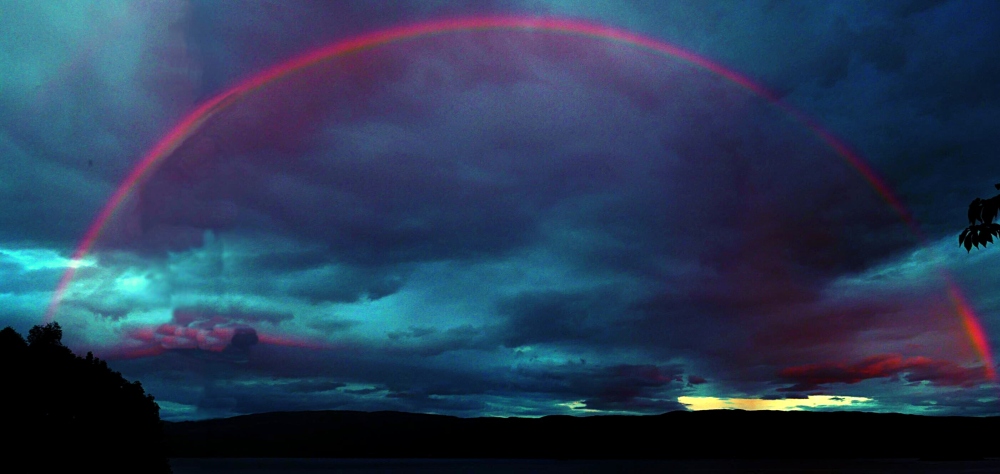Moonbows, which are also called lunar rainbows, are different from regular rainbows because they are made by the light from the moon instead of the sun.
A moonbow is a rainbow that is made by moonlight instead of direct sunlight. It is also called a moon rainbow or a lunar rainbow. Aside from the source of light, its formation is the same as that of a solar rainbow. It is made when light is reflected in water droplets in the air, such as from rain or a waterfall. As seen from Earth, they are always on the opposite side of the sky from the Moon.
Moonbows have been talked about at least since Aristotle’s Meteorology (around 350 BC). They are much less bright than rainbows during the day because the Moon’s surface reflects less light. Because of this, it is much harder for a person to see colors in a moonbow because the light is usually too dim to turn on the color receptors in our eyes. Because of this, we usually see moonbows as white, but if we take a picture with a long exposure, we can see their colors.

The best time to see a moonbow is at or near full moon, when the Moon is at or near its brightest and the clouds aren’t in the way. For moonbows to appear, the Moon must be low in the sky (less than 42 degrees, preferably lower) and the night sky must be very dark. But because the sky isn’t completely dark when the full moon is rising or setting, you can only see a moonbow two to three hours before sunrise or two to three hours after sunset. And, of course, there must be water droplets in the sky opposite the Moon, like from rain or spray.
Due to these conditions, moonbows are much less common than solar rainbows. In fact, they happen less than 10% as often as normal rainbows. In the winter, when the sky is darker and it rains at high latitudes, moonbows can sometimes be seen when the full moon is rising. The size of the water drops in the air affects how the colors look. The smaller the water drops, the less vivid the colors will be.

A moonbow doesn’t have to be caused by rain. Spray, fog, or mist can also do the trick. In the United States, you can see these bows near waterfalls like Niagara Falls, Yosemite National Park, and Cumberland Falls, which is near Corbin, Kentucky. Spray moonbows are another thing that many people know about Victoria Falls, which is on the border between Zambia and Zimbabwe.

How can you find a moonbow?
As was said above, you can only see a moonbow during the three days around a full moon when you look up at a dark sky near the end of the evening twilight or before sunrise. The best time for moonbows in the middle latitudes is during full moons in the summer, when the Moon is low in the sky more of the time. During other times of the year, moonbows may only last an hour.
When it’s cloudy and the Moon is low and bright, always look for a pale moonbow. You probably won’t see many colors, but if you put a camera on a tripod, it will be easy to catch the colors.
